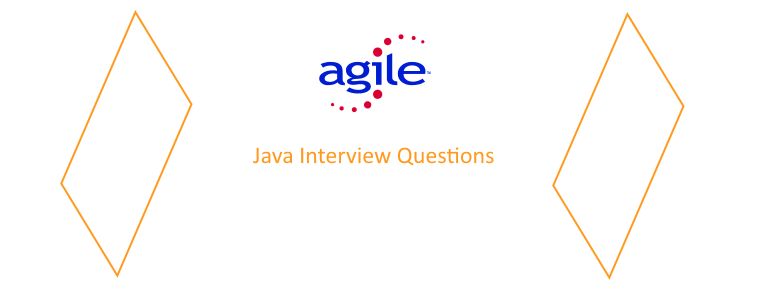Java/J2EE Interview Questions
The Following are Java/J2EE Interview Questions
1. What is Jakarta Struts Framework? – Jakarta Struts is open source implementation of MVC (Model-View-Controller) pattern for the development of web based applications. Jakarta Struts is robust architecture and can be used for the development of application of any size. Struts framework makes it much easier to design scalable, reliable Web applications with Java.
2. What is ActionServlet? – The class org.apache.struts.action.ActionServlet is the called the ActionServlet. In the the Jakarta Struts Framework this class plays the role of controller. All the requests to the server goes through the controller. Controller is responsible for handling all the requests.
3. How you will make available any Message Resources Definitions file to the Struts Framework Environment? – Message Resources Definitions file are simple .properties files and these files contains the messages that can be used in the struts project. Message Resources Definitions files can be added to the struts-config.xml file through
Example:
<message-resources parameter=”MessageResources” />
4. What is Action Class? – The Action Class is part of the Model and is a wrapper around the business logic. The purpose of Action Class is to translate the HttpServletRequest to the business logic. To use the Action, we need to Subclass and overwrite the execute() method. In the Action Class all the database/business processing are done. It is advisable to perform all the database related stuffs in the Action Class. The ActionServlet (commad) passes the parameterized class to Action Form using the execute() method. The return type of the execute method is ActionForward which is used by the Struts Framework to forward the request to the file as per the value of the returned ActionForward object.
5. Write code of any Action Class? – Here is the code of Action Class that returns the ActionForward object.
import javax.servlet.http.HttpServletRequest;
import javax.servlet.http.HttpServletResponse;
import org.apache.struts.action.Action;
import org.apache.struts.action.ActionForm;
import org.apache.struts.action.ActionForward;
import org.apache.struts.action.ActionMapping;
public class TestAction extends Action
{
public ActionForward execute(
ActionMapping mapping,
ActionForm form,
HttpServletRequest request,
HttpServletResponse response) throws Exception
{
return mapping.findForward(\"testAction\");
}
} 6. What is ActionForm? – An ActionForm is a JavaBean that extends org.apache.struts.action.ActionForm. ActionForm maintains the session state for web application and the ActionForm object is automatically populated on the server side with data entered from a form on the client side.
7. What is Struts Validator Framework? – Struts Framework provides the functionality to validate the form data. It can be use to validate the data on the users browser as well as on the server side. Struts Framework emits the java scripts and it can be used validate the form data on the client browser. Server side validation of form can be accomplished by sub classing your From Bean with DynaValidatorForm class. The Validator framework was developed by David Winterfeldt as third-party add-on to Struts. Now the Validator framework is a part of Jakarta Commons project and it can be used with or without Struts. The Validator framework comes integrated with the Struts Framework and can be used without doing any extra settings.
8. Give the Details of XML files used in Validator Framework? – The Validator Framework uses two XML configuration files validator-rules.xml and validation.xml. The validator-rules.xml defines the standard validation routines, these are reusable and used in validation.xml. to define the form specific validations. The validation.xml defines the validations applied to a form bean.
9. How you will display validation fail errors on jsp page? – The following tag displays all the errors:
<html:errors/>
10. How you will enable front-end validation based on the xml in validation.xml? - The <html:javascript> tag to allow front-end validation based on the xml in validation.xml. For example the code: <html:javascript formName=”logonForm” dynamicJavascript=”true” staticJavascript=”true” /> generates the client side java script for the form “logonForm” as defined in the validation.xml file. The


java interview questions
Urgent Opening [java/j2ee] Bangalore Location
Hi,
we are also continuously HIRING and seek your referrals for:
1) JAVA, J2EE (3-5 years)
5. UI Developer
Strong in Photoshop, HTML, CSS and JavaScript.
Very good in Flash, XML and XHTML
Very good logical & analytical thinking.
Very good communication/client communication
Good to have: ASP.Net, JavaScript libraries and UI standards.
2) Embedded linux (3-5 years)
3) Linux, Kernel development (3 to 5 yrs)
Please send in your updated Resume to [email protected]
regards,
chetan
Fine